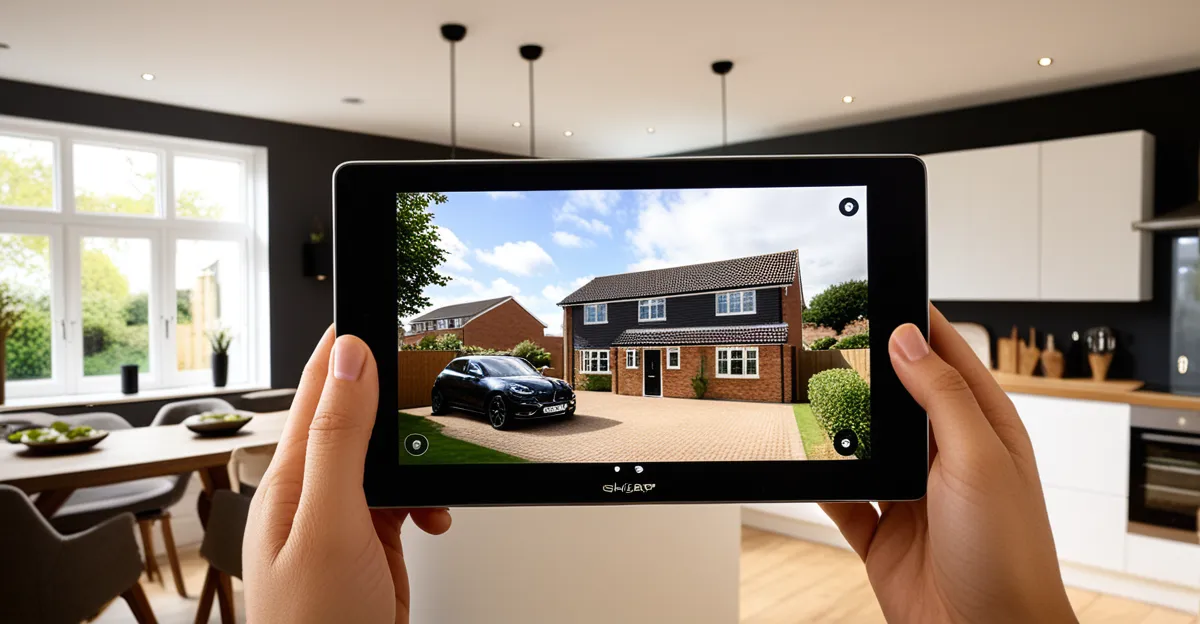Core benefits of smart home technology for UK households
Smart home benefits in the UK extend beyond convenience, offering substantial energy savings that align with national standards. By integrating devices with local energy suppliers, UK smart homes can optimize consumption patterns, reducing waste and lowering bills. This efficiency is particularly valuable given the fluctuating UK weather and energy costs.
Home automation advantages also include enhanced security tailored to UK needs. Smart alarms and monitoring systems provide real-time alerts, helping residents respond promptly to potential risks. Features such as smart locks and cameras strengthen protection while supporting local insurance requirements.
Also to discover : What Are the Most Crucial Features to Look for in Ergonomic Furniture for Your Home?
Daily life convenience is a standout smart home benefit. Automation simplifies routines for diverse UK lifestyles, whether for busy urban families or elderly residents requiring accessibility tools. Voice assistants and connected devices adapt smoothly to British homes, from compact flats to historic properties, demonstrating the versatility of home automation advantages across varied living situations.
Together, these benefits position smart home technology as a practical investment for UK households seeking greater efficiency, security, and ease in managing their homes.
Also to discover : How Can You Transform Your Home’s Ambiance Using Simple DIY Crafts?
Energy efficiency and cost savings with smart home systems
Smart home benefits in the UK notably include energy efficiency, a vital aspect given rising energy costs and environmental concerns. UK smart homes often utilise smart thermostats UK devices that adapt heating schedules based on occupancy and weather forecasts, directly reducing energy waste. By integrating with UK energy suppliers, homes gain precise control over consumption patterns, helping households achieve significant energy cost reduction.
Smart lighting controls further enhance savings by adjusting brightness and shutting off unused lights automatically. These systems consider UK weather settings, where varying daylight hours and temperatures influence energy demands. Adaptive technology in smart homes responds to these changes dynamically, ensuring optimal efficiency throughout the year.
Monitoring usage through connected apps enables residents to track and modify their energy habits, supporting long-term cost savings. This feedback loop encourages behavioural changes aligning with UK energy standards and sustainability goals.
Overall, energy efficiency in UK smart homes is not just about lowering bills; it also contributes to national efforts in reducing carbon footprints. The combination of smart thermostats UK, seamless integration with energy suppliers, and adaptive lighting controls exemplify how home automation advantages can deliver practical and measurable benefits for everyday British living.
Security enhancements relevant to UK living
Smart home security in UK households is designed with home safety UK priorities in mind. Smart alarms offer real-time alerts directly to residents’ smartphones, enabling immediate response to unusual activity. This feature is critical in busy British lives where being away from home is common. Remote monitoring through apps allows homeowners to check camera footage and control smart locks no matter where they are.
Smart locks and cameras enhance protection by providing data on who enters or leaves the property, supporting crime prevention in neighbourhoods. Many systems also connect to local community safety networks, promoting a collective security approach popular in UK areas. Additionally, smart home security setups comply with UK insurance requirements, often leading to reduced premiums when verified.
Integration of these technologies creates a layered defence tailored to British homes, acknowledging factors like frequent travel and neighbourhood watch schemes. UK residents benefit from systems that are user-friendly but robust, ensuring that security stays effective without complexity. In sum, smart home security merges technology and local insight to offer practical and proactive safety solutions for UK living.
Convenience and accessibility for different UK lifestyles
Smart home convenience in UK households adapts to a wide range of lifestyles, enhancing daily routines with home automation advantages. For busy working families, automation manages tasks like lighting, heating, and appliance control, allowing more time for priorities outside the home. Meanwhile, elderly residents benefit greatly from accessibility technology tailored to their needs, such as voice-activated systems and automated door controls, which support independent living safely and comfortably.
These smart systems integrate seamlessly with the UK’s tech infrastructure, including popular voice assistants compatible with local accents and dialects, ensuring intuitive use for all household members. Customisation also caters to the diversity of UK homes—from compact city flats to spacious detached houses and even period properties, where integration respects architectural constraints.
By automating everyday actions and offering adaptive controls, smart home convenience in the UK fosters easier, more efficient living. Residents experience fewer physical barriers and increased control over their environments, directly addressing varied needs across Britain. The technology’s flexibility stands out as a key advantage, making smart homes accessible and valuable to every UK lifestyle.
Integration and compatibility with UK infrastructure
Smart home technology for UK households prioritises UK smart home compatibility to ensure seamless functionality. Devices are designed to align with British wiring standards, sockets, and voltage, preventing installation issues common with imported equipment. This compatibility reduces technical barriers, allowing residents to adopt smart solutions confidently.
Integration with the UK broadband infrastructure is crucial. Most smart systems connect via Wi-Fi or hub-based networks optimised to work with British internet service providers, supporting stable and responsive control. This connectivity ensures that smart home benefits, such as remote monitoring and automation, operate reliably without frequent disruptions.
Furthermore, smart devices often support local languages and dialects, enhancing user interaction. Voice assistants and connected systems are fine-tuned for UK accents, making commands more accurately recognised and enabling smoother daily use. This adaptation is key to maximizing user satisfaction across diverse UK households.
Examples of compatibility include smart thermostats tailored to UK climate controls and lighting systems designed for British homes’ electrical layouts. Such tailored integration underlines the practical home automation advantages UK families experience, reinforcing smart homes as accessible and efficient solutions within the distinct British environment.
Trends and real-life smart home technology adoption in the UK
The rise of UK smart home adoption reflects growing household interest in home automation advantages tailored to British living. Recent studies show a steady increase in UK smart home adoption, with more families installing smart thermostats, lighting, and security systems to improve comfort and efficiency. This trend corresponds with heightened awareness of energy savings and home safety benefits specific to UK conditions.
Key factors driving this growth include accessible technology, competitive pricing, and compatibility with UK standards. For example, many new homeowners integrate voice assistants and automated devices that adapt to local accents and customs, enhancing usability and convenience. Additionally, UK smart home trends reveal an expansion beyond urban centres into suburban and rural areas, demonstrating broad appeal across demographics.
Real-life case studies highlight how UK households benefit from tailored solutions—such as smart heating control adjusting to unpredictable weather and smart security aligned with specific neighbourhood safety concerns. These examples underscore the smart home benefits realised through customised technology integration.
Government incentives supporting energy-efficient home upgrades also encourage adoption, helping residents invest in technology that delivers long-term savings and improved living standards. This combination of consumer demand and policy support is shaping a dynamic future for home automation in the UK.






